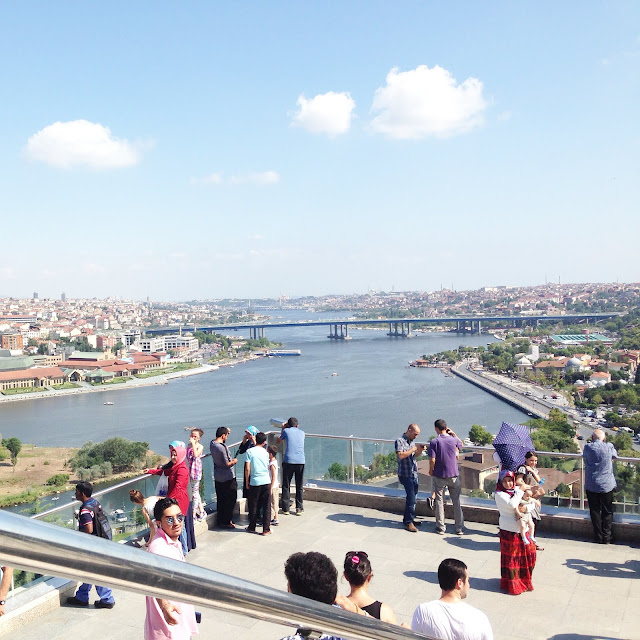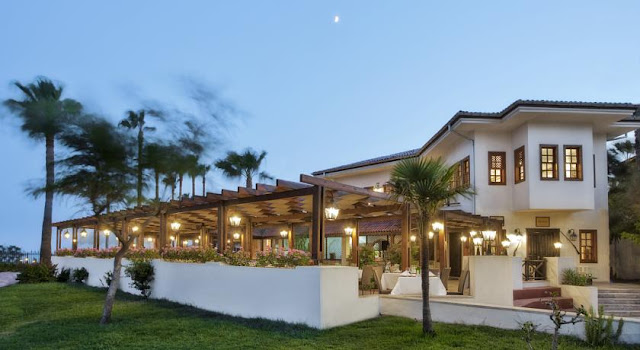Istanbul is a city in Turkey that straddles Europe and Asia across the Bosphorus Strait. The Old City reflects cultural influences of the many empires that once ruled here. In the Sultanahmet district, the open-air, Roman-era Hippodrome was for centuries the site of chariot races, and Egyptian obelisks remain. The iconic Byzantine Hagia Sophia features a soaring dome and Christian mosaics.
Turkey Tourism & Vacations 2015
The architect of Istanbul's Blue Mosque, Sedefkâr Mehmet Ağa, paid tribute to his colleagues Anthemius of Tralles and Isidorus of Miletus, architects of neighboring Ayasofya (Hagia Sophia), who designed their masterwork a thousand years before Mehmet Aga was born.
As you proceed deep into Ayasofya, the domes seem to billow upward into space, creating their own "heavens." In the Blue Mosque, Mehmet Aga has duplicated the effect on the exterior of the building: as you approach from the front and ascend the stairs toward the courtyard, the domes billow upward until, entering the courtyard, the full grandeur of the exterior is revealed.
Ayasofya was the greatest church in Christendom, and was meant to be. According to Prof. Robert Osterhout, it was built to surpass the gigantic Church of St Polyeuchtos erected by Julia Anitzia, scion of the line of Theodosian emperors.
Most of the 30 million gold tesserae (tiny mosaic tiles) which cover the church's interior—especially the dome—have recently been restored to the brilliance they boasted 1500 years ago. The interior was filled with scaffolding for 17 years, until March 2012. The scaffolding was removed that year, but in 2013 some scaffolding returned so that work may continue.
The Sultanahmet district is the heart of historic Old Istanbul, what 19th-century travelers used to call "Stamboul."
This is where you'll find Topkapı Palace, Ayasofya (Hagia Sophia), the Blue Mosque (Sultan Ahmet Camii), the Byzantine Hippodrome, Basilica Cistern (Yerebatan Saray), Binbirdirek Cistern, the Istanbul Archeological Museums, Great Palace Mosaic Museum, and several lesser sights.
GalataTower , and Beyoğlu further north with its main thoroughfare, the pedestrianized Istiklal Street, and the adjoining Taksim Square is the district of Istanbul north of Sultanahmet/Old City, across the Golden Horn. This district, especially Taksim Square is usually considered the “city center” of Istanbul. Primarily visited for its nightlife, this district has also its own share of sights and accommodation.
Ortaköy, once literally "the village in the middle" (orta) of the European Bosphorus shore 8 km (5 miles) northeast of Sultanahmet (map), is now among Istanbul's coolest, chic-est, most artsy neighborhoods, with trendy boutiques, atmospheric cafés and bistrots, and crowds of young, sophisticated residents and visitors.


Pierre Loti Cafe,is located in Eyüp, Istanbul., the café was a simple, humble place with a few stools and a small stove for brewing Turkish coffee.Today the café is far nicer, with shady tables, a variety of beverages and snacks, and even a hotel and full-fledged restaurant.
Julien Viaud, the French naval officer who wrote novels under the pen name of Pierre Loti, used to come to this Istanbul hilltop overlooking Eyüp and the Golden Horn (map) to contemplate the city he had come to love:
Pierre Loti is centrally situated in Sultanahmet and is surrounded by local bars and eateries as well as major highlights including Topkapi Palace, Hagia Sophia, Grand Bazaar, Spice Bazaar, Blue Mosque, Underground Cistern and Archaeological Museum.

Pierre Loti Cafe, Eyüp, Istanbul.

Pierre Loti Cafe, Eyüp, Istanbul.
Pierre Loti Cafe, Eyüp, Istanbul.





































